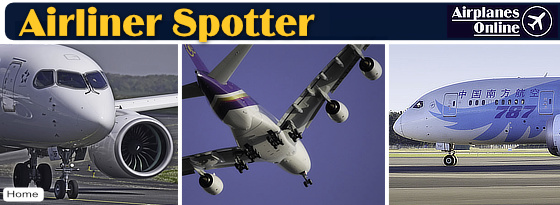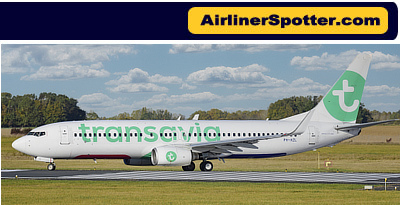Boeing 737 Spotting Guide
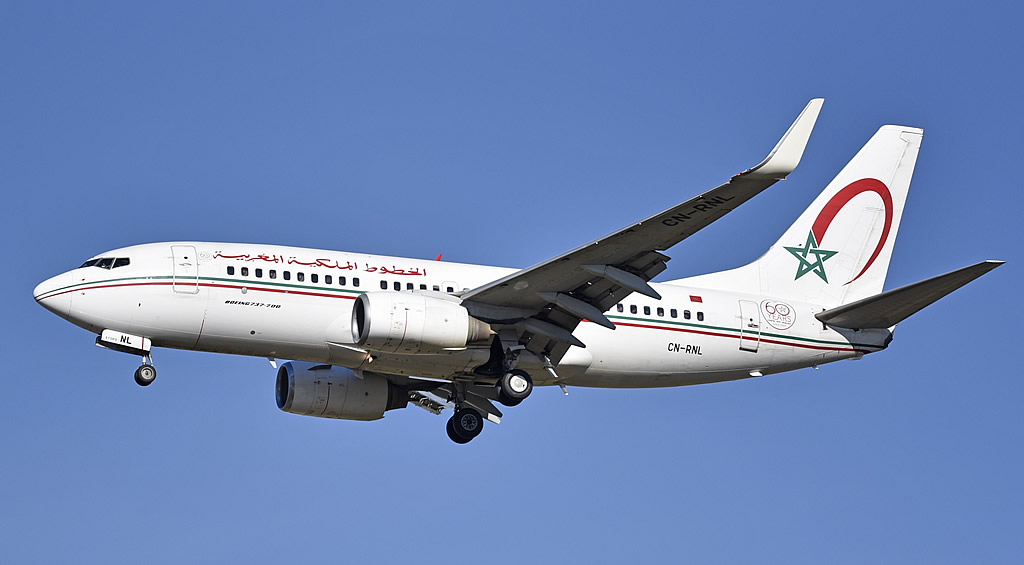 |
Originally developed as a shorter, lower-cost twin-engine airliner derived from the Boeing 707 and 727, Boeing has developed the 737 into a large family of passenger models with capacities from 85 to 215 passengers. It features six-abreast seating.
The 737, also known as the "Baby Boeing", is Boeing's only narrow-body airliner in production, and remains one of the best-selling jet commercial airliners. It currently competes primarily with the Airbus A320 family.
As of June of 2025, Boeing has built over 12,000 737 series jetliners, one of the highest-selling commercial jetliner in commercial aviation history. View current Orders/Deliveries from The Boeing Company
The U.S. Air Force and Navy also use military versions of the 737, including the P-8 Poseidon, the C-40 Clipper and 737 AEW&C.
737 final assembly is conducted at the Boeing Renton Factory in Renton, Washington, in the greater Seattle area. The facility includes 1.1 million square feet of covered space.
Boeing 737 Generations
The four main "generations" of the 737 are as follows (click for details):
| Generation | Models | |
| Original | 737-100 and 737-200 | Details |
| Classic | 737-300, 737-400 and 737-500 | Details |
| Next Generation (NG) | 737-600, 737-700, 737-800 and 737-900 | Details |
| MAX | 737-7, 737-8, 737-9 and 737-10 | Details |
Some General Boeing 737 Spotting Tips
| The Boeing 737 is a narrow-body jet airliner featuring a pointed nose, one engine under each wing, and a triangular section on the front of the tail. It features two very short twin-wheel main landing gears, forcing the engines to be positioned mostly in front of the wings. |
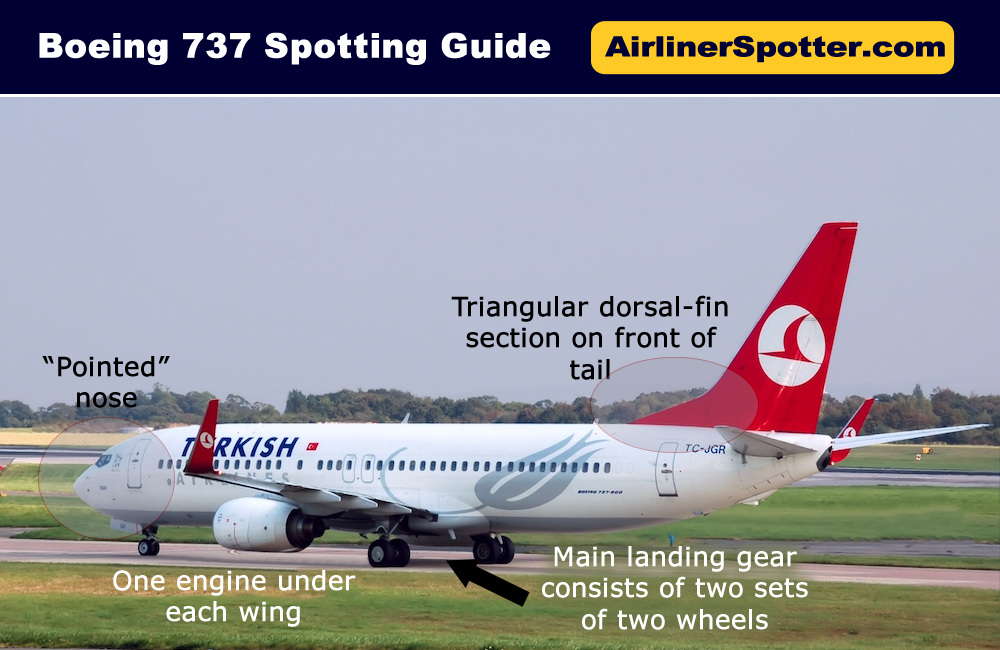 |
Retracted main landing gear on a Boeing 737 are not enclosed in the fuselage, but are open-air as seen in the photo below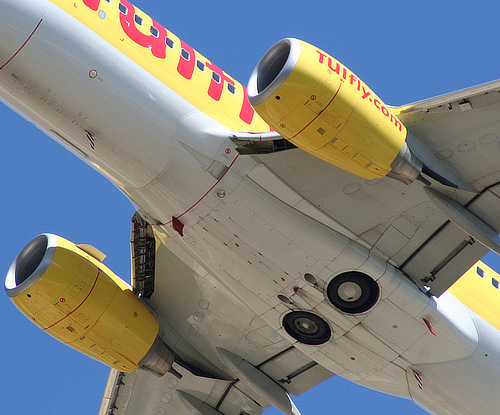 |
Low ground clearance of the engines on the 737 Classic and NG series caused the design of non-circular air intakes, aka the "hamster pouch". 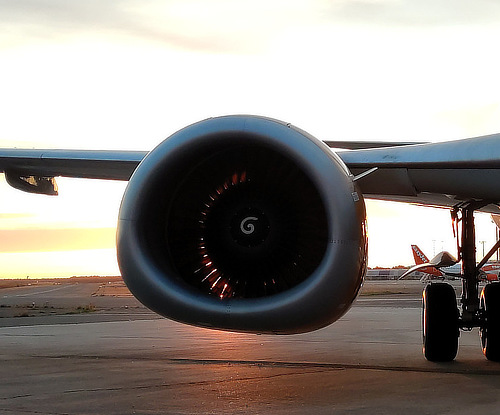 |
Boeing 737 Originals: The -100 and -200s
Originally envisioned in 1964, the initial 737-100 made its first flight in April of 1967 and entered airline service in February of 1968 at Lufthansa. Boeing ultimately built only 30 737-100 airliners.
The -100 was lengthened by 76" (36" ahead of and 40" behind the wing) into the 737-200, which entered service in April of 1968.
Boeing also offered the 737-200C Convertible and the 737-200QC Quick Change models. By the time production ended in August of 1988, Boeing had assembled 1,114 737-200 aircraft.
The Boeing 737-130, the first production 737, shown below, is on display at the Museum of Flight in Seattle, Washington. Boeing used this 737 as a flight test aircraft before it became NASA's Transport Systems Research Vehicle in 1974. (Staff Photo)
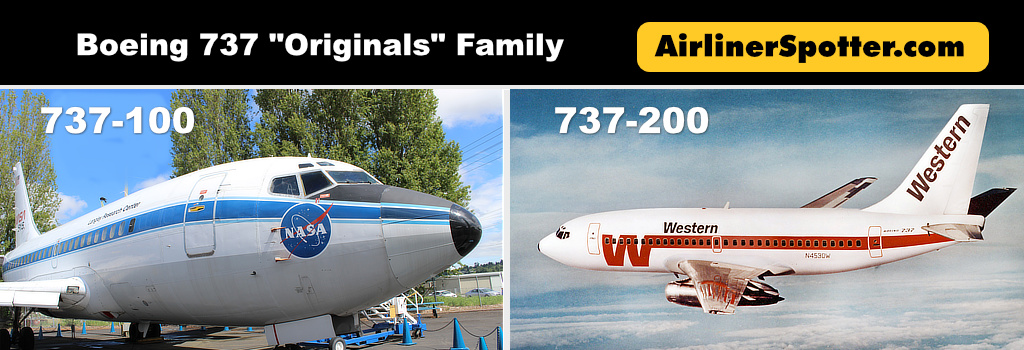 |
Boeing 737 Classics: The -300, -400 and -500
In the 1980s Boeing launched the -300, -400, and -500 models, subsequently referred to as the Boeing 737 Classic series.
The 737 Classics used CFM56 turbofan engines, which created an engineering design challenge caused by the low ground clearance of the 737.
The problem was solved by placing the engine ahead of the wing, and by moving engine accessories to the sides (rather than the bottom) of the engine pod. This configuration gave the 737 engine enclosure a distinctive non-circular air intake, aka the "hamster pouch".
The 737 Classic's wing incorporated a number of changes for improved aerodynamics, and was extended 9 inches. The leading-edge slats and trailing-edge flaps were adjusted, and the cockpit featured enhanced electronics.
Production occurred from 1984 to 2000, with 1,988 aircraft delivered.
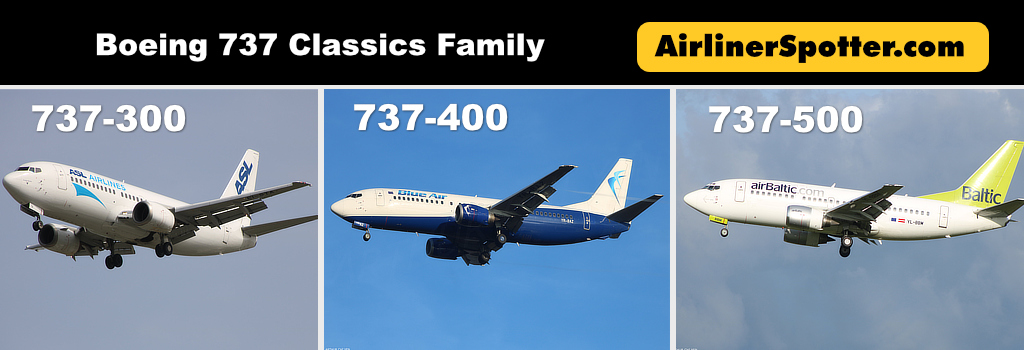 |
Boeing 737 NG New Generation Series: The -600, -700, -800 and -900
In the 1990s, Boeing introduced the 737 Next Generation (NG), with multiple changes including a redesigned, increased span laminar flow wing, upgraded "glass" cockpit, and new interior.
The 737NG series can seat between 110 and 210 passengers, and includes these models:
- 737-600 is the replacement of the 737-500, and competes with the Airbus A318. Length: 102' 6"
- 737-700 replaced the 737-300, with competition typically from the Airbus A319. Boeing also offers an extended range 737-700ER. Length: 110' 4"
- 737-800 is a stretched version of the 737-700, and replaces the 737-400. Length: 129' 6"
- 737-900 is the longest variant in the series, along with the 737-900ER (Extended Range). The ER features an additional pair of exit doors. Length: 138' 2"
Boeing has also built versions of the Boeing Business Jet (BBJ) based on the 737. The U.S. Navy operates the P-8 Poseidon, a modified 737-800ERX.
 |
Spotting guide for the Next Generation "NG" Series
- The -700, -800 and -900 NG series models feature blended winglets.
- Split Scimitar winglets are available for the 737-700, 737-800, 737-900 and 737-900ER.
- Boeing 737-600 and 737-700 have two cabin doors, and one emergency exit over the wing, on each side of the fuselage.
- Boeing 737-800 has two cabin doors, and two emergency exits over the wing, on each side of the fuselage.
- Boeing 737-900 has similar door configurations as the 737-800, except that the 737-900ER has an additional exit door aft of the wing, on each side of the fuselage.
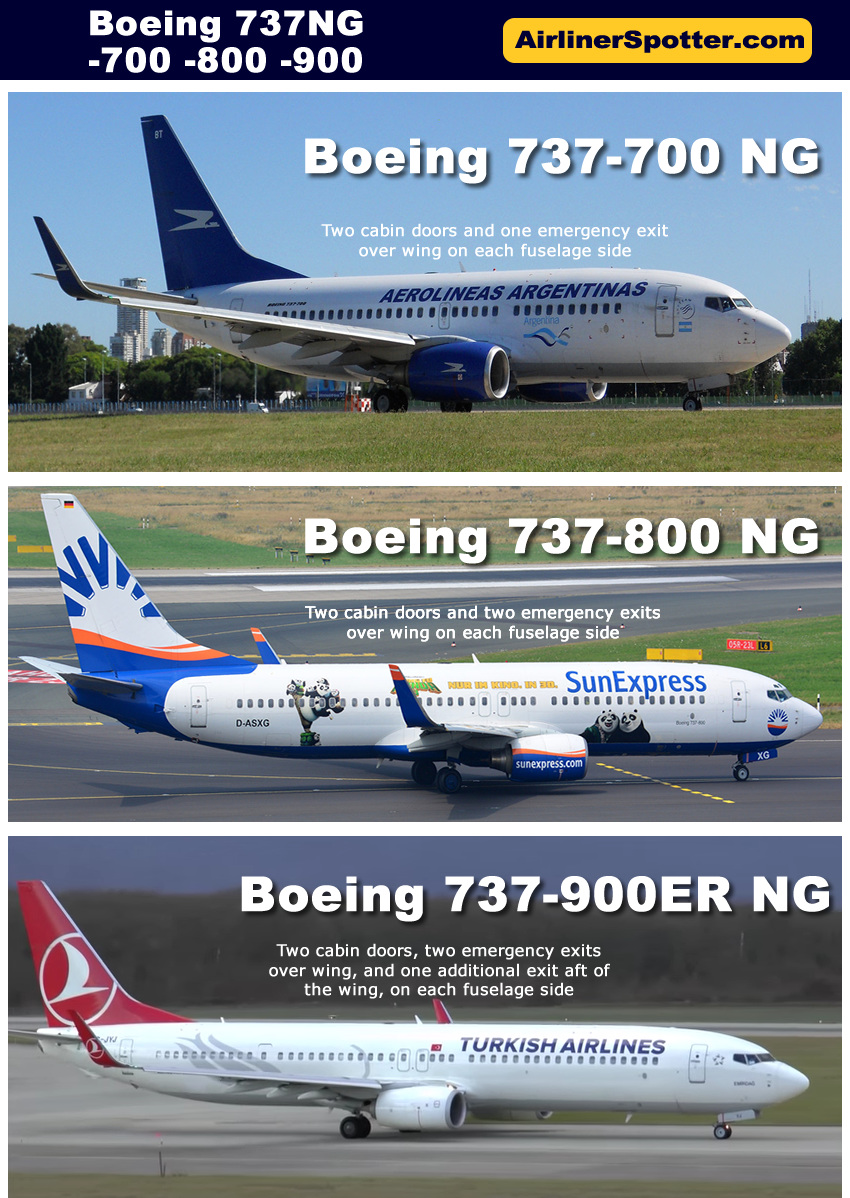 |
Boeing 737-600
| Boeing 737-600 of Tunis Air |
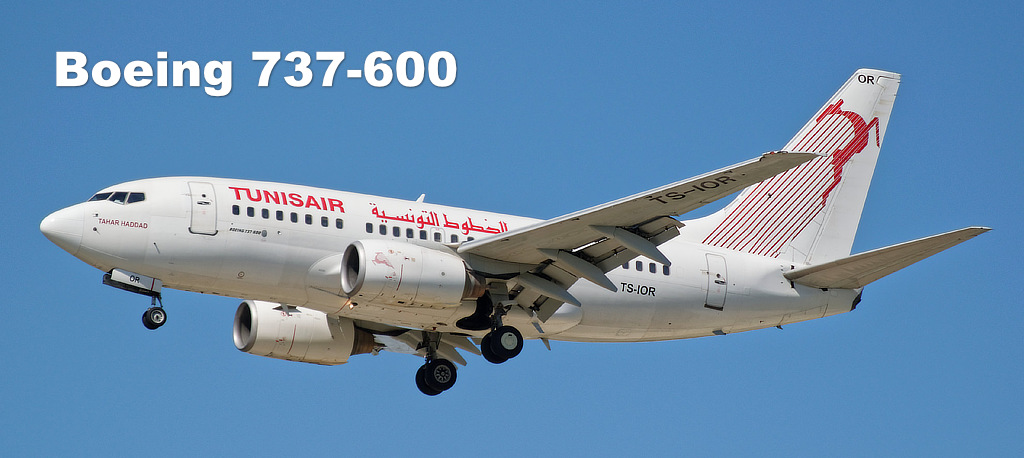 |
Boeing 737-700
| TUI Boeing B737-700, Registration Number OO-JOS |
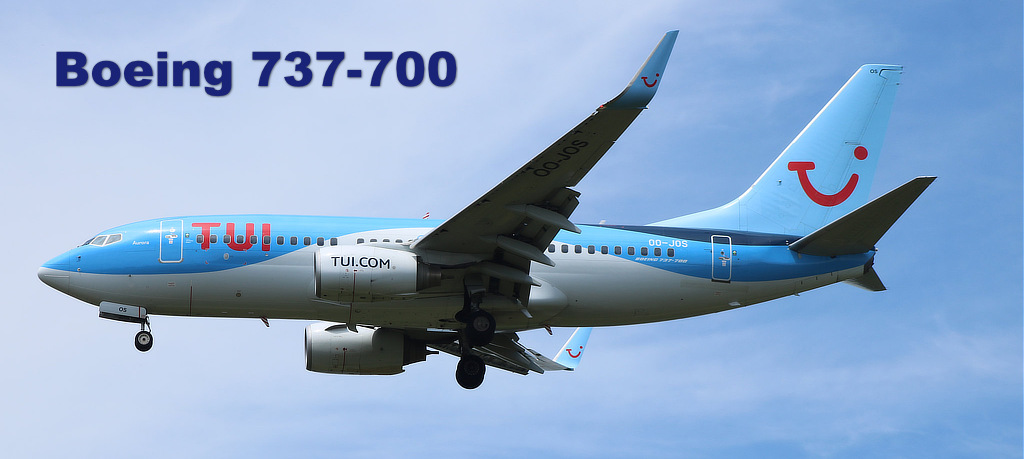 |
| Boeing B737-700 of Royal Air Maroc, Registration CN-RNL (Photo by DELEHELLE Eric) |
 |
Boeing 737-800
| Norwegian Air Boeing B737-800, Registration LN-DYU (Photo by Arthur Chi Yen) |
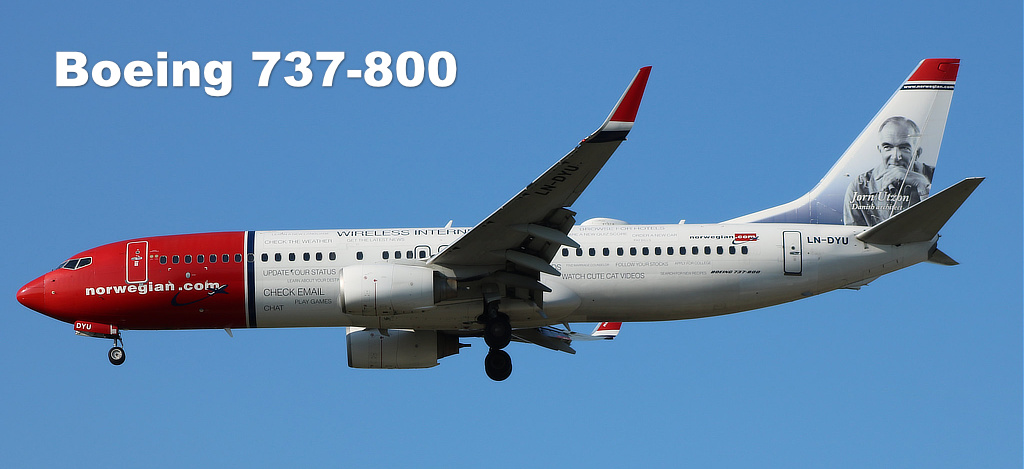 |
| Virgin Australia Boeing B737-800, Registration VH-YIJ (Photo by Bernard Spragg) |
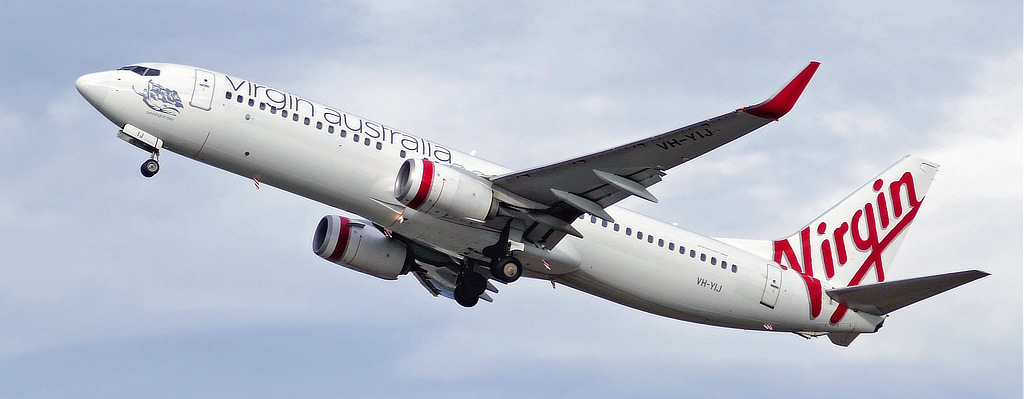 |
| Turkish Airlines Boeing B737-800, Registration PH-BGC (Photo by DELEHELLE Eric) |
 |
| Boeing 737-800 and MAX 8 Side-by-Side Comparison |
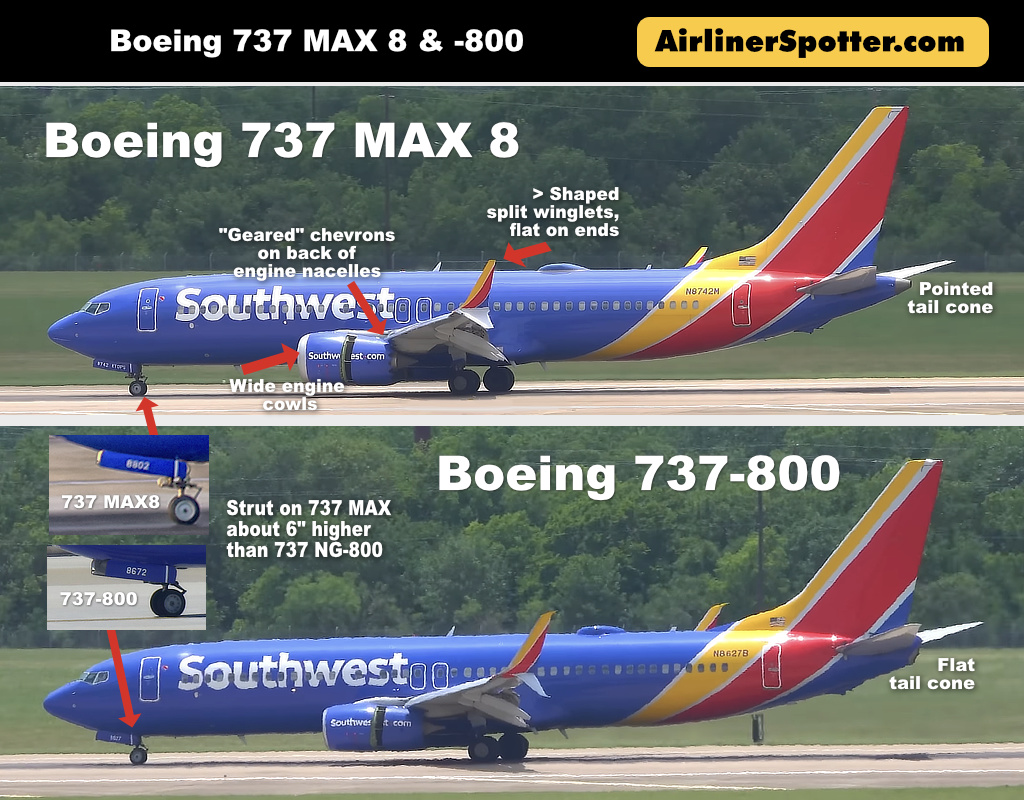 |
Boeing 737-900
| Turkish Airlines Boeing 737-900ER, Registration TC-JYM |
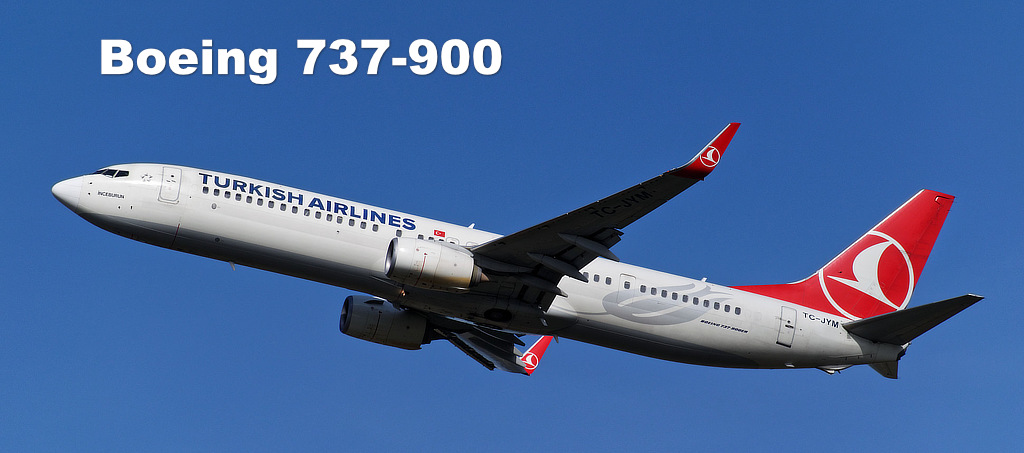 |
Boeing P-8 Poseidon of the U.S. Navy
| U.S. Navy P-8 Poseidon ... a variant of the Boeing 737-800 |
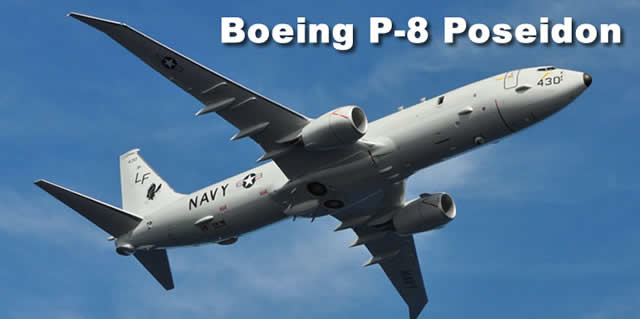 |
Boeing Business Jet (BBJ)
The BBJ is a business jet based upon the Boeing 737 series airliners. These aircraft typically seat between 25 and 50 passengers within a luxurious configuration. This may include a master bedroom, a washroom with showers, a conference/dining area, and a living area. The 737 BBJ is based on the 737-700 with a stronger wing and landing gear from the 737-800.
The U.S. Air Force C-40 B/C is based upon the commercial Boeing 737 BBJ. The body of the C-40 is identical to that of the Boeing 737-700, but has winglets.
| U.S. Air Force C-40B BBJ, a Boeing 737 variant, S/N 02-0042, msn 33500 (Photo by DELEHELLE Eric) |
|
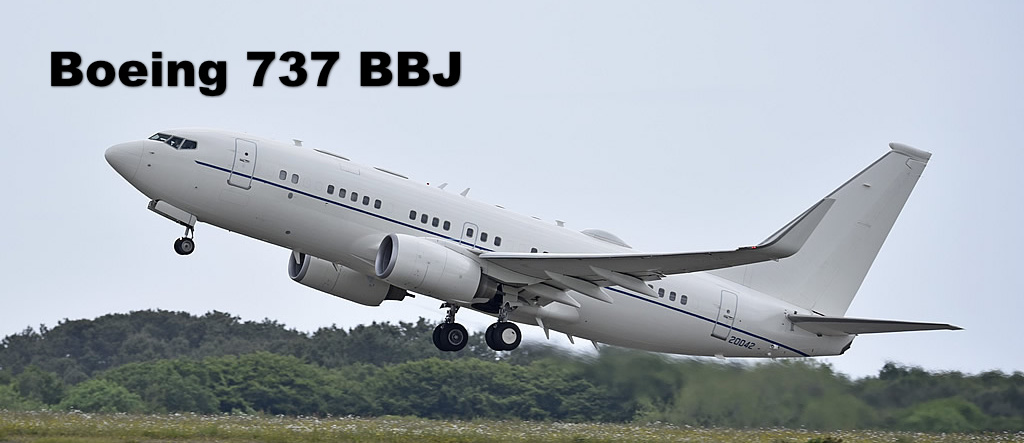 |
Boeing 737 MAX Program
Boeing announced its new, fuel-efficient 737 MAX Family in 2011: 737 MAX 7, 737 MAX 8, 737 MAX 9, and 737 MAX 10.
The aircraft achieves higher efficiency due to its new wing, split-tip winglets and engine design. It features the new Boeing Sky Interior.
The MAX series is powered by LEAP-1B engines made by CFM, which is co-owned by General Electric and France's Safran.
Read more about the Boeing 737 MAX
Boeing 737 MAX Characteristics & Spotting Guide
| 737 MAX Model | Overall Length | Passengers |
| MAX 7 | 116' 8" (35.56 m) | 138 - 172 |
| MAX 8 | 129' 8" (39.52 m) | 162 - 210 |
| MAX 9 | 138' 4" (42.16 m) | 178 - 220 |
| MAX 10 | 143' 8" (43.8 m) | 188 - 230 |
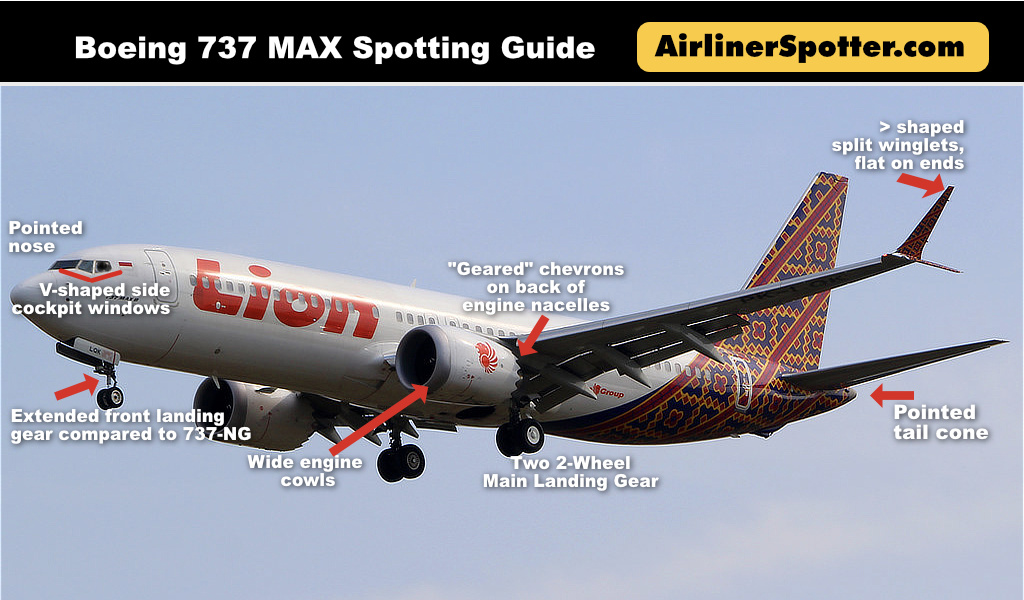 |
Read more about the Boeing 737 MAX
A Few Notable Differences Between the Boeing 737 and the Airbus A320 Series
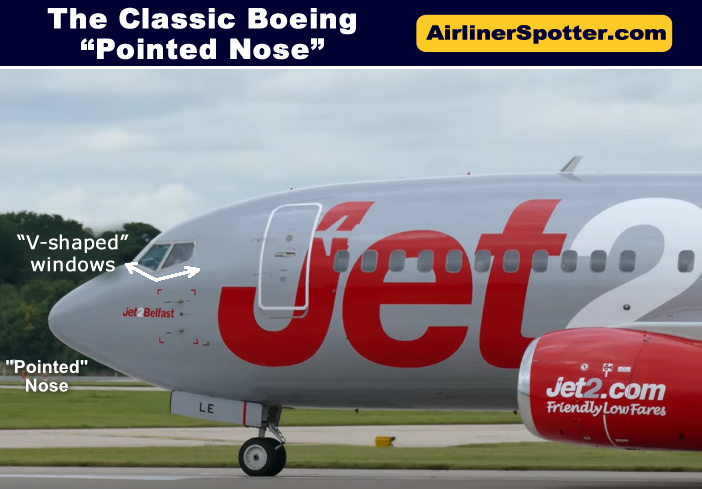 The classic Boeing airliner has a "pointed nose" as seen here on a 737. Many also have a "V-shaped" side cockpit windshield, as seen on the 737, 757, 767 and 777. |
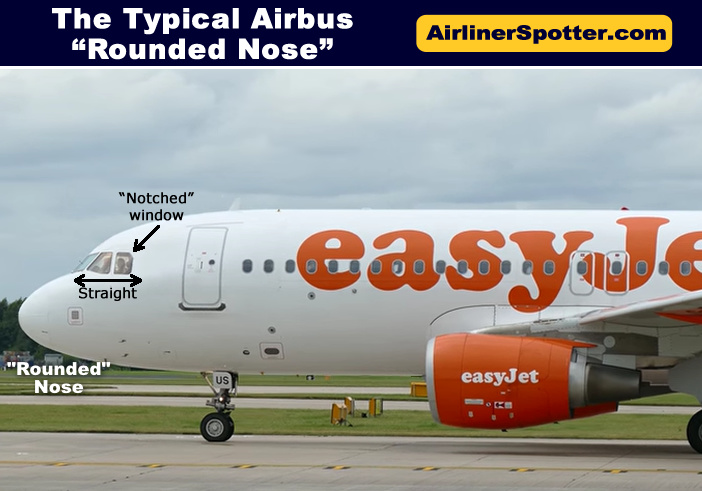 The typical narrow-body Airbus airliner features a "rounded nose" with the side windshield straight across the bottom. The rear cockpit window is "notched" on the A300, A310, A318, A319, A320, A321, A330 and A340.. |
Comparison of the typical Boeing and Airbus cockpit window design and configuration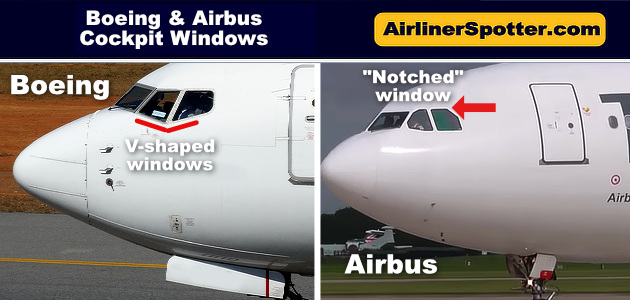 |
|
Frontier Airlines Airbus A320 parked next to a United Airlines Boeing 737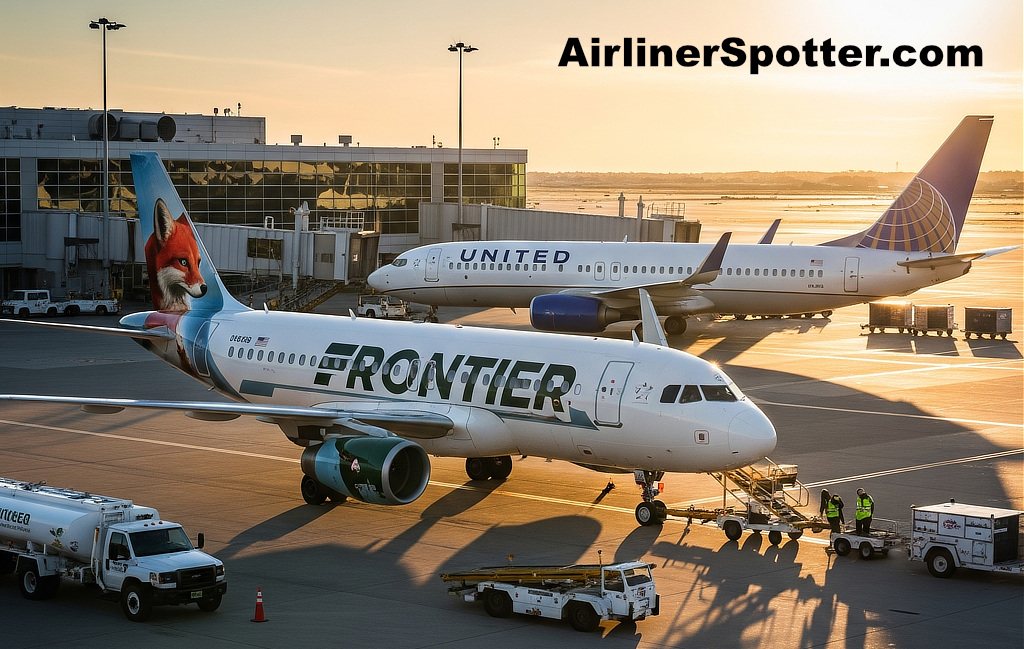 |
|
